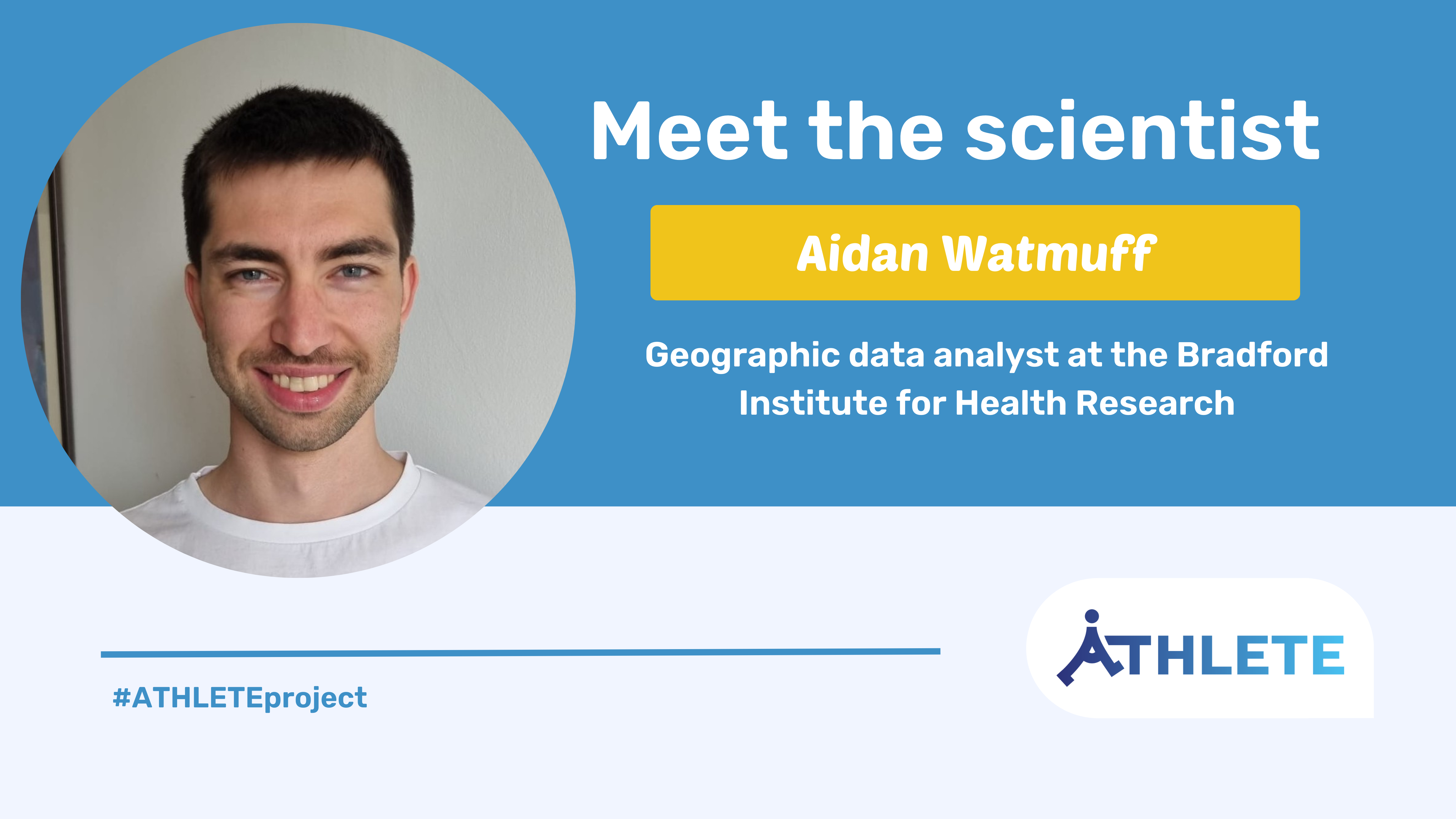Through ATHLETE’s Fellowship Programme, early-career researchers working on the human exposome are given the opportunity to collaborate with other consortium partners around the world. We talked with Aidan Watmuff, a research data analyst at the Bradford Institute for Health Research in the UK, about his recent fellowship that he completed at ISGlobal.

Fellow profile: Aidan Watmuff is a geographic data analyst based at the Bradford Institute for Health Research and works with ATHLETE partner Born in Bradford (BiB) to study a prospective pregnancy/birth cohort of over 12,500 families based in Bradford, the 6th largest city in the UK. The study aims to examine how genetic, nutritional, environmental, behavioural and social factors affect health and development during childhood and into adult life, in a deprived multi-ethnic population.
Hosting institution: ISGlobal leads the coordination of the ATHLETE project and hosted Aidan within their geographic information systems (GIS) team. Amanda Fernandes, a postdoctoral researcher on urban health, provided technical guidance throughout the fellowship. In the ATHLETE project, the GIS team contributes to work carried out under work package 1, which focuses on establishing the FAIR (Findable, Accessible, Interoperable, Reusable) data infrastructure with a safe and robust data management platform when working with data from different exposome cohorts.
Aidan, what is your research focus in the ATHLETE project?
My area of interest is looking at the spatial variation in environmental exposures, and how this can have an impact on health. In other words, I am interested in how differences in a person’s location (for example, where they live or work) can either positively or negatively impact their health, due to either harmful or beneficial factors in their local area (such as high air pollution or living close to park).
As a data analyst, my role in ATHLETE is mainly technical. My work explores ways to improve the quality of our existing location and environmental exposure data to help contribute towards more accurate research into the impact of people’s direct environment on health.
How did you choose your fellowship and what did you do during your placement?
I have a background in geography and geographic information science (GIS), and I was looking for opportunities to collaborate with an institution with a strong GIS team with the aim of being able to bring some new spatial analysis skills back to my home institution, Born in Bradford. I had previously worked with the GIS team at ISGlobal, so the fellowship seemed like a natural fit!
Over the course of the ten-week fellowship, I designed and tested a new methodology for cleaning GPS data in ATHLETE, to identify the main locations visited by our study participants over an average week. This included tackling technical problems related to manipulating big sets of GPS data, running algorithms to automate the data cleaning process, and reviewing existing academic literature to identify the most suitable parameters to apply to the data when identifying microenvironments.
I documented this process in a detailed protocol which can be used in other studies in ATHELTE as a how-to guide for cleaning big and complex GPS data. This protocol also provides a thorough step-by-step methodology for identifying and verifying microenvironments visited by study participants. Using evidence from academic literature and study data, the protocol aims to explain why each decision is made in the data cleaning process and highlights potential difficulties a researcher may encounter when using GPS data.
What are the next steps in your research work under the ATHLETE project and what are you looking forward to?
In this fellowship I was able to develop the protocol based on Born in Bradford (BiB) data, and I hope to expand this and verify the protocol using GPS data from five other ATHLETE studies. Once I have finalised the protocol, I would like to expand the project and use this new location data to create highly accurate environmental exposure estimates (such as on air pollution), based on locations actually visited by participants. This would provide greater accuracy compared to the common practice of just using home or school addresses. This information can help with the design and development of interventions to improve the health of communities in cities.